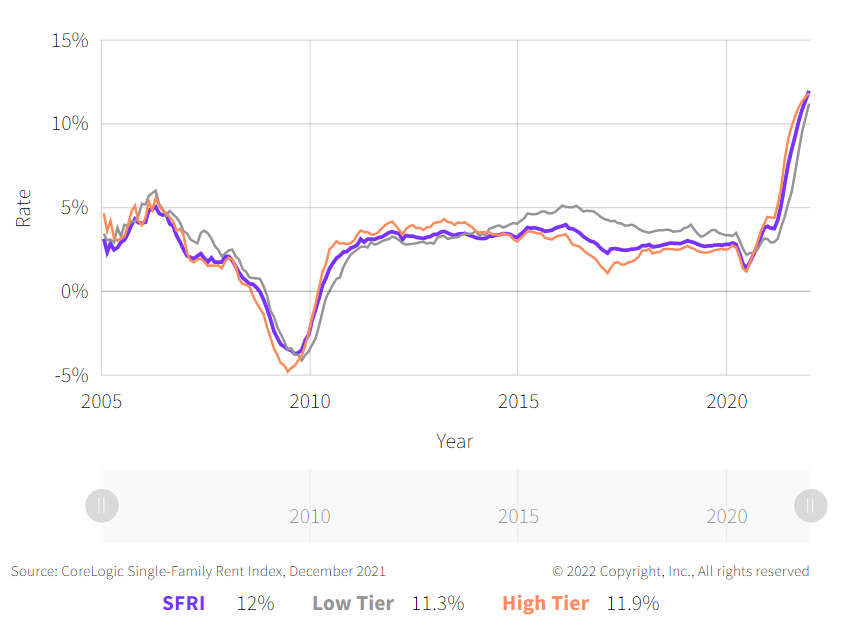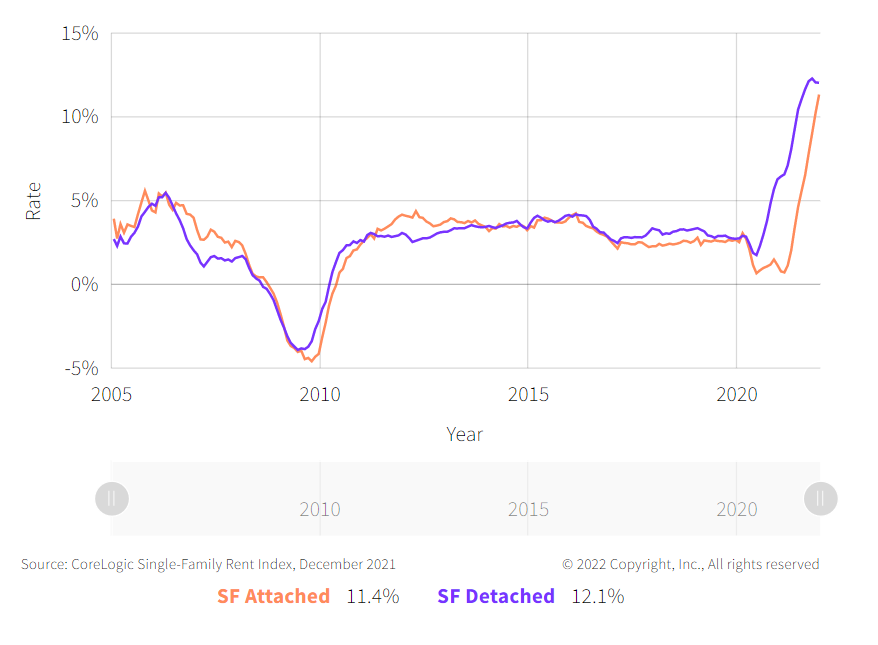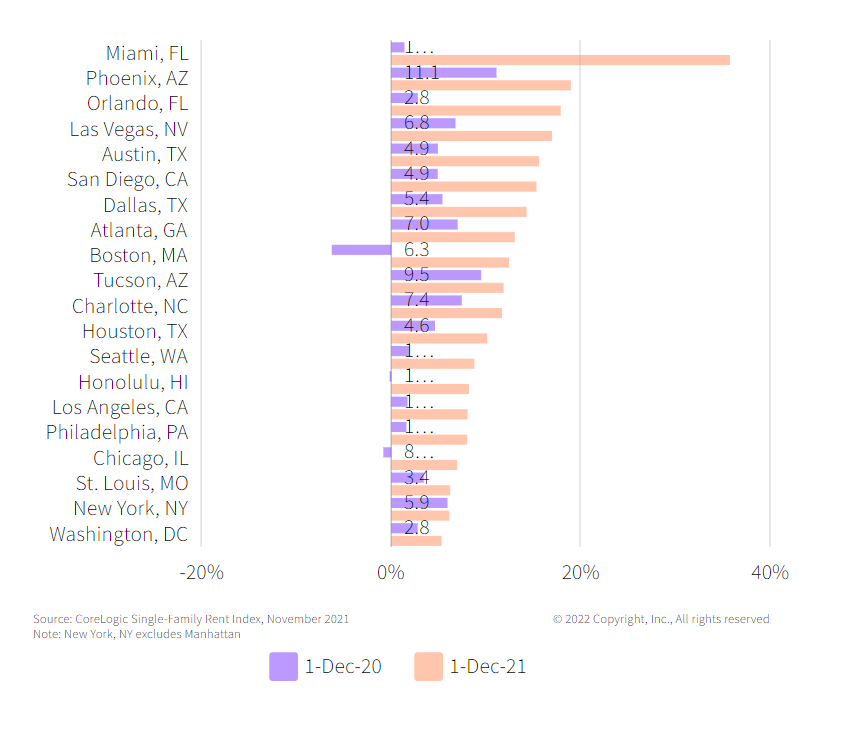
U.S. Single-Family Rents Up 12% Year Over Year in December
Overall Single-Family Rent Growth
U.S. single-family rent growth increased 12% in December 2021, the fastest year-over-year increase in over 16 years, according to the CoreLogic Single-Family Rent Index (SFRI). The index measures rent changes among single-family rental homes, including condominiums, using a repeat-rent analysis to measure the same rental properties over time. The December 2021 increase was more than three times the December 2020 increase, and while the index growth slowed in the summer of 2020, rent growth returned to its pre-pandemic rate by October 2020.
Single-Family Rent Growth by Price Tier
Rent growth continued at a rapid pace for all price tiers in December. The low-price tier is defined as properties with rent prices less than 75% of the region’s median rent, and the high-price tier is defined as properties with rent prices greater than 125% of a region’s median rent (Figure 1).
Rent prices for the low-price tier increased 11.2% year over year in December 2021, up from 3.9% in December 2020. Meanwhile, high-price rentals increased 11.9% in December 2021, up from a gain of 4.5% in December 2020. This was the fastest increase in the history of the SFRI for both the low- and high-price rent tiers.
Figure 1: National Single-Family Rent Index Year-Over-Year Percent Change By Price Tier

Single-Family Rent Growth by Property Type
Differences in rent growth by property type emerged after the pandemic, as renters sought out standalone properties in lower density areas (Figure 2), though the most recent data show that rent growth slowed a bit for detached properties and continued to strengthen for attached properties, bringing the relationship between detached and attached rentals back to where it was prior to the pandemic. Annual rent growth for detached rentals was 12.1% in December, compared with 11.4% for attached rentals.
Figure 2: Rent Growth Slowed for Detached Properties and Strengthened Attached Properties

Metro-Level Results
Figure 3 shows the year-over-year change in the rental index for 20 large metropolitan areas in December 2021. Among the 20 metro areas shown, Miami, with an increase of 35.7%, stood out with the highest year-over-year rent growth in December, followed by Phoenix at 18.9%. Washington, D.C. had the lowest increase at 5.3%, and Boston (+12.4%) showed significant improvement from a year ago, when rents decreased 6.3%. All 20 metros shown in Figure 3 had higher rent growth than a year earlier.
Figure 3: Single-Family Rent Index Year-Over-Year Percent Change in 20 Markets

Single-family rent prices in 2021 increased by more than three times the 2020 rate. Affordability challenges and limited supply created barriers to home purchasing for many prospective buyers. These factors have driven elevated demand for single-family rentals and put increased pressure on the market as vacancy rates also hit historic lows. While slowing home price appreciation could help gradually balance demand for the rental market, rent prices will likely remain strong throughout the year.
To learn more about the data behind this article and what CoreLogic has to offer, visit https://www.corelogic.com/.







Sign up to receive our stories in your inbox.
Data is changing the speed of business. Investors, Corporations, and Governments are buying new, differentiated data to gain visibility make better decisions. Don't fall behind. Let us help.













Sign up to receive our stories in your inbox.
Data is changing the speed of business. Investors, Corporations, and Governments are buying new, differentiated data to gain visibility make better decisions. Don't fall behind. Let us help.





